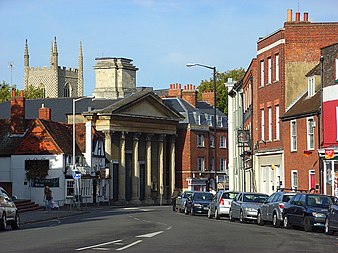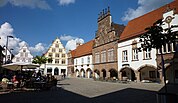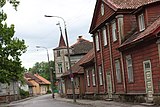
A | B | C | D | E | F | G | H | CH | I | J | K | L | M | N | O | P | Q | R | S | T | U | V | W | X | Y | Z | 0 | 1 | 2 | 3 | 4 | 5 | 6 | 7 | 8 | 9
This article has multiple issues. Please help improve it or discuss these issues on the talk page. (Learn how and when to remove these template messages)
|
A town is a type of a human settlement. Towns are generally larger than villages and smaller than cities,[1] though the criteria to distinguish between them vary considerably in different parts of the world.
Etymology
The word "town" shares an origin with the German word Zaun, the Dutch word tuin, and the Old Norse tún.[2] The original Proto-Germanic word, *tūnan, is thought to be an early borrowing from Proto-Celtic *dūnom (cf. Old Irish dún, Welsh din).[3]
The original sense of the word in both Germanic and Celtic was that of a fortress or an enclosure. Cognates of town in many modern Germanic languages designate a fence or a hedge.[3] In English and Dutch, the meaning of the word took on the sense of the space which these fences enclosed, and through which a track must run.[citation needed] In England, a town was a small community that could not afford or was not allowed to build walls or other larger fortifications, and built a palisade or stockade instead.[4] In the Netherlands, this space was a garden, more specifically those of the wealthy, which had a high fence or a wall around them (like the garden of the palace of Het Loo in Apeldoorn, which was the model for the privy garden of William III and Mary II at Hampton Court). In Old Norse tún means a (grassy) place between farmhouses, and the word is still used with a similar meaning in modern Norwegian.
Old English tūn became a common place-name suffix in England and southeastern Scotland during the Anglo-Saxon settlement period. In Old English and Early and Middle Scots, the words ton, toun, etc. could refer to diverse kinds of settlements from agricultural estates and holdings, partly picking up the Norse sense (as in the Scots word fermtoun) at one end of the scale, to fortified municipalities.[1] Other common Anglo-Saxon suffixes included ham 'home', stede 'stead', and burh 'bury, borough, burgh'.
In toponymic terminology, names of individual towns and cities are called astyonyms or astionyms (from Ancient Greek ἄστυ 'town, city', and ὄνομα 'name').[5]
Meaning
In some cases, town is an alternative name for "city" or "village" (especially a small city or large village; and occasionally even hamlets). Sometimes, the word town is short for township. In general, today towns can be differentiated from townships, villages, or hamlets on the basis of their economic character, in that most of a town's population will tend to derive their living from manufacturing industry, commerce, and public services rather than primary sector industries such as agriculture or related activities.
A place's population size is not a reliable determinant of urban character. In many areas of the world, e.g. in India at least until recent times, a large village might contain several times as many people as a small town. In the United Kingdom, there are historical cities that are far smaller than the larger towns.

The modern phenomenon of extensive suburban growth, satellite urban development, and migration of city dwellers to villages has further complicated the definition of towns, creating communities urban in their economic and cultural characteristics but lacking other characteristics of urban localities.
Some forms of non-rural settlement, such as temporary mining locations, may be clearly non-rural, but have at best a questionable claim to be called a town.
Towns often exist as distinct governmental units, with legally defined borders and some or all of the appurtenances of local government (e.g. a police force). In the United States these are referred to as "incorporated towns". In other cases the town lacks its own governance and is said to be "unincorporated". The existence of an unincorporated town may be legally set out by other means, e.g. zoning districts. In the case of some planned communities, the town exists legally in the form of covenants on the properties within the town. The United States Census identifies many census-designated places (CDPs) by the names of unincorporated towns which lie within them; however, those CDPs typically include rural and suburban areas and even surrounding villages and other towns.
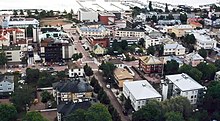
The distinction between a town and a city similarly depends on the approach: a city may strictly be an administrative entity which has been granted that designation by law, but in informal usage, the term is also used to denote an urban locality of a particular size or importance: whereas a medieval city may have possessed as few as 10,000 inhabitants, today some[who?] consider an urban place of fewer than 100,000 as a town, even though there are many officially designated cities that are much smaller than that.
193 countries have been involved in a common effort to agree on a common statistical definition of the three categories: cities, towns and rural areas.[6][failed verification][7][failed verification]
Age of towns scheme
Australian geographer Thomas Griffith Taylor proposed a classification of towns based on their age and pattern of land use. He identified five types of towns:[8]
- Infantile towns, with no clear zoning
- Juvenile towns, which have developed an area of shops
- Adolescent towns, where factories have started to appear
- Early mature towns, with a separate area of high-class housing
- Mature towns, with defined industrial, commercial and various types of residential area
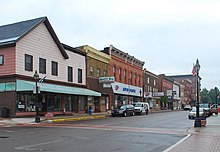
History
Through different periods of recorded history, many towns have grown into sizeable settlements, with the development of properties, centres of culture, and specialized economies.
Neolithic
Çatalhöyük, currently an archaeological site, was considered to be the oldest inhabited town, or proto-city, that existed from around 7500 BC. Inscribed as a World Heritage Site, it remains a depopulated town with a complex of ruins.
Roman era
Zdroj:https://en.wikipedia.org?pojem=TownText je dostupný za podmienok Creative Commons Attribution/Share-Alike License 3.0 Unported; prípadne za ďalších podmienok. Podrobnejšie informácie nájdete na stránke Podmienky použitia.
Antropológia
Aplikované vedy
Bibliometria
Dejiny vedy
Encyklopédie
Filozofia vedy
Forenzné vedy
Humanitné vedy
Knižničná veda
Kryogenika
Kryptológia
Kulturológia
Literárna veda
Medzidisciplinárne oblasti
Metódy kvantitatívnej analýzy
Metavedy
Metodika
Text je dostupný za podmienok Creative
Commons Attribution/Share-Alike License 3.0 Unported; prípadne za ďalších
podmienok.
Podrobnejšie informácie nájdete na stránke Podmienky
použitia.
www.astronomia.sk | www.biologia.sk | www.botanika.sk | www.dejiny.sk | www.economy.sk | www.elektrotechnika.sk | www.estetika.sk | www.farmakologia.sk | www.filozofia.sk | Fyzika | www.futurologia.sk | www.genetika.sk | www.chemia.sk | www.lingvistika.sk | www.politologia.sk | www.psychologia.sk | www.sexuologia.sk | www.sociologia.sk | www.veda.sk I www.zoologia.sk

